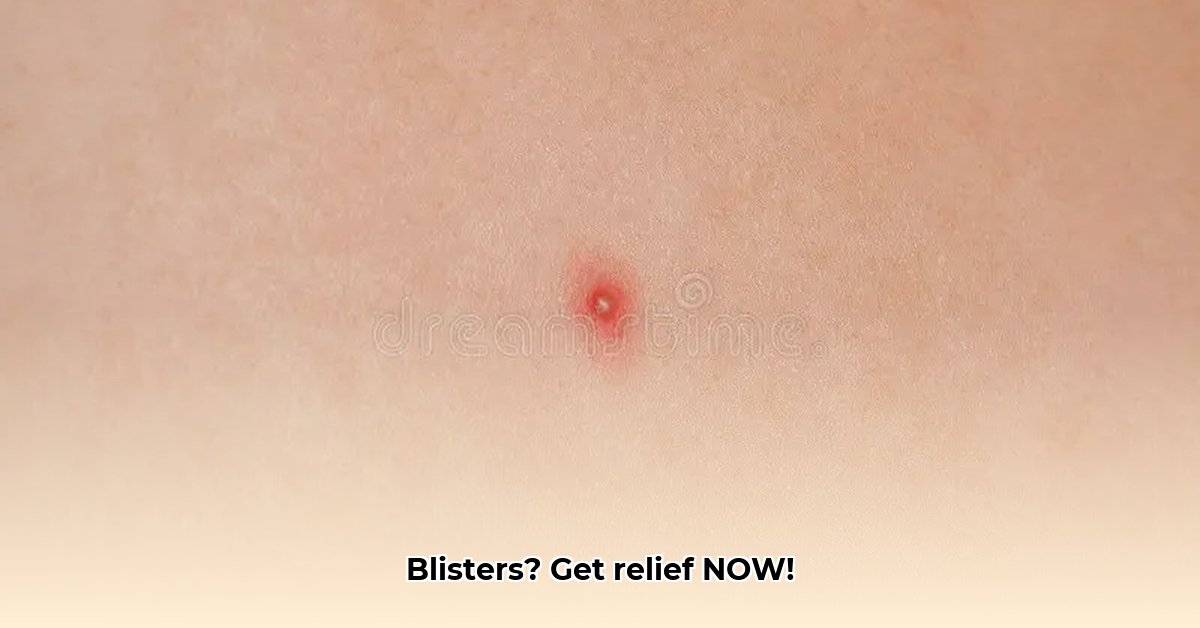
Hey there! Dealing with those irritating, fluid-filled blisters on your skin? Jy's nie alleen nie! Many South Africans experience "blaasjes op huid met vocht," more commonly known as dyshidrotic eczema. This itchy skin condition, characterised by small, water-filled bumps mostly on your hands and feet, can be incredibly uncomfortable. But don't worry – this guide will help you understand it and find relief. We’ll cover causes, symptoms, treatment options, and prevention strategies, all in plain, easy-to-understand Afrikaans-influenced English.
Understanding the Itch: What is Dyshidrotic Eczema?
Dyshidrotic eczema (DE) isn't contagious. However, it is incredibly uncomfortable, causing intense itching and sometimes even painful cracking and weeping. The good news is that it's manageable. Many people experience recurring outbreaks, and understanding the condition better can help you manage those flare-ups.
Why Do These Blisters Appear? Unpacking the Causes
Unfortunately, the exact cause of DE remains unknown. Research suggests several factors might play a role:
- Allergies: Contact allergies to certain substances might trigger the condition.
- Stress: Many experience outbreaks during stressful periods.
- Sweating: Excess sweating, particularly in hot weather, can irritate the skin.
It's likely a combination of these factors. More research is needed to fully understand DE's origins.
Identifying the Symptoms: What to Look For
DE typically presents as small, fluid-filled blisters, often clustered together. They usually appear on the palms of your hands, soles of your feet, fingers, and toes. Intense itching is a major symptom. Blisters can be painful and may crack open, leading to weeping skin. Recognizing these signs early helps ensure timely treatment.
Getting a Diagnosis: Seeing a Doctor
A doctor or dermatologist will diagnose DE through a physical examination, asking about your symptoms and lifestyle. They may perform allergy tests to rule out other conditions with similar symptoms. A proper diagnosis is crucial for effective treatment.
Effective Treatment Strategies: Finding Relief
Treatment focuses on easing symptoms and preventing secondary infections.
- Moisturise: Use a gentle, fragrance-free moisturiser several times daily to prevent cracking.
- Cool Compresses: Soothe itching with cool compresses or by applying cool water. Over-the-counter hydrocortisone cream might also help.
- Avoid Irritants: Identify and avoid substances that irritate your skin (harsh soaps, detergents, chemicals).
- Medical Intervention: For persistent or severe cases, a dermatologist might prescribe stronger topical steroid creams or other medications.
Preventing Future Outbreaks: Taking Control
Stress management is crucial: Try relaxation techniques like yoga, meditation, or deep breathing. Identify and avoid your personal triggers (e.g., harsh chemicals, excessive handwashing). Keeping your skin well-moisturised is also helpful.
When to Seek Professional Help: When Should You Worry?
Seek medical attention if:
- Symptoms are severe and disrupt your daily life.
- You see signs of infection (pus, increased pain/swelling).
- Your condition persists despite self-care.
Living With Dyshidrotic Eczema: A Message of Hope
Living with DE can be challenging, but it's manageable. By working with your doctor, you can develop a personalized treatment plan. With consistent management, you can experience relief and live comfortably.